Seeing The Trees For The Hills
#BuildingBridges
As people increasingly seek solace and inspiration from Scotland’s celebrated hills and mountains, hillwalker Paul Webster, explores how our preconceptions of the landscape limit its potential for both nature and people.

"If you need to put problems into perspective, there is nothing better than climbing a mountain."
Trying to interpret landscapes has been a key part of who I am for as long as I can remember. As a kid, I used to make maps of my home village and its surroundings, marking the positions of secret hideouts in the bushes and undergrowth. These maps allowed me to better understand how places fitted together and by my early teens, I was climbing to the tops of hills to get a better feel for the landscape below. By the time I was twenty, I was a committed hillwalker.
As you leave childhood behind, life becomes so much more complicated. The demands I put on myself to succeed and find my way in the adult world, along with a growing awareness of society’s imbalances, led to me drawing something else from my trips up the hills. The stresses of the human world can become mentally overwhelming and taking time out to observe and experience the animals, plants and processes that seem to operate regardless of us, provides solace and reassurance. If you need to put problems into perspective, there is nothing better than climbing a mountain and looking out over a vast, empty landscape, which makes all our endeavours and preoccupations seem tiny and inconsequential.

The lure of Scotland’s hills is obvious, but is our inability to read and interpret this landscape limiting its ecological potential and therefore, limiting our experience?
Except, a part of me always knew that things were not so simple. That inspiring and remarkable natural world I love, doesn’t operate independently of the human world. Hence, we have biodiversity loss, pollution, oceans of plastic and climate change. Many of the hills I’ve climbed over the years are now clothed in blanket Sitka spruce plantations, imported trees grown in lines like cabbages with no space for diversity. Across those beloved moorlands, zig-zagging vehicle tracks have been bulldozed up the virgin hillsides. But were they ever really virgin?
When faced with losing parts of nature we love, it’s all too easy to fall into the trap of trying to keep things as we knew them in our own past. We tend to think of the world of our childhood as being stable, as the ideal. We instinctively fall back on the familiar, the comfortable. People fight to ‘preserve the countryside’ – the one they know or once knew themselves. But the bigger picture is that nature’s losses have mounted significantly from generation to generation. The fact is that Scotland’s hills, mountains and ‘wild’ places are a shadow of what they once were, and what they could be again.
"One of the penalties of an ecological education is that one lives alone in a world of wounds."
Aldo Leopold
One book I read at university had a profound effect on me. I’d read the mountaineering classics along with many works of nature writing, from John Muir’s My Summer in the Sierra to Thoreau’s Walden. But it was A Sand County Almanac that really opened my eyes. Written as a connected series of essays by the American ecologist Aldo Leopold over several decades, it was published in 1949, after his death. His writing recounted the joy and catharsis in personally experiencing the natural world that I had found myself, and the same joy in exploring wild places: “To those devoid of imagination, a blank place on the map is a useless waste; to others, the most valuable part.” But Leopold strove harder to truly understand. In doing so, he uncovered the losses of the past – he wrote movingly of the extinction of the passenger pigeon, of the draining of the marshes, the taming of the rivers, the eradication of the bears and wolves from the mountains – an eradication in which he participated, before coming to a new and deeper understanding: “One of the penalties of an ecological education is that one lives alone in a world of wounds.”
“There are some who can live without wild things and some who cannot,” wrote Leopold, and I took to the hills and wild places more frequently than ever. I was beginning to learn to see these beloved sanctuaries through different eyes. I now saw that the mountains were unnaturally bare because of overgrazing by sheep and excessive numbers of red deer, which were really forest animals and often faced starvation from their life on the open, denuded slopes. They lack natural predators and were kept at high levels by a stalking industry that, at its worst, wanted to maximise the number of stags for their clients to hunt. I learned that the patchwork heather moors looked as they did because they were controlled by burning, kept in an ecological stasis, almost a monoculture for the benefit of a single species – red grouse, again to maximise numbers for shooting. I began to wonder if there was another way.

An estimated 12% of Scotland's land area is covered in intensively managed moorland, dedicated to driven grouse shooting,
It was a visit to Creag Meagaidh that hinted at a different future. The estate had been purchased by Scottish Natural Heritage (now NatureScot) in the mid 1980s, with the aim of enabling natural regeneration of the native woodland by reducing deer numbers to sustainable levels. By the mid ‘90s when I first walked up to Coire Ardair, the transformation of the glen was well underway with verdant growth of birches and rowans, and with them bird and insect life. It showed that Scotland’s landscape could be restored to something far richer in nature. I had already grown to love the pinewoods of the Cairngorms, and had been a member of the John Muir Trust back from when they started their first project in Coire Dhorrcail on Ladhar Bheinn in Knoydart, but to see for myself how the ancient woodland could recover when it was given the chance, was a revelation.
Today there is spectacular woodland regeneration in places all around Scotland - at Glen Feshie and Mar Lodge in the Cairngorms; at Dundreggan in Glen Moriston; at Carrifran in the Borders and at Glen Affric, now part of the Affric Highlands nature recovery initiative. Near my home is the Cairngorms Connect partnership, where neighbouring landholdings are working together to restore nature to 600 square kilometres of Scotland’s largest National Park. Beyond these celebrated rewilding projects, local organisations, communities and individuals are working to restore and enhance our wild (and not so wild) places, to help nurse them back towards fuller ecological health.
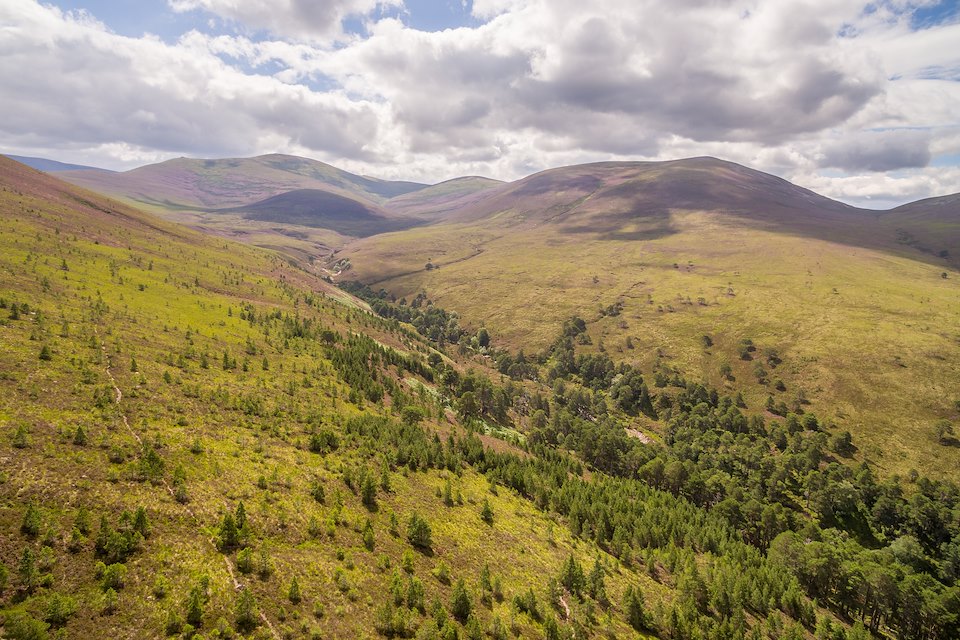
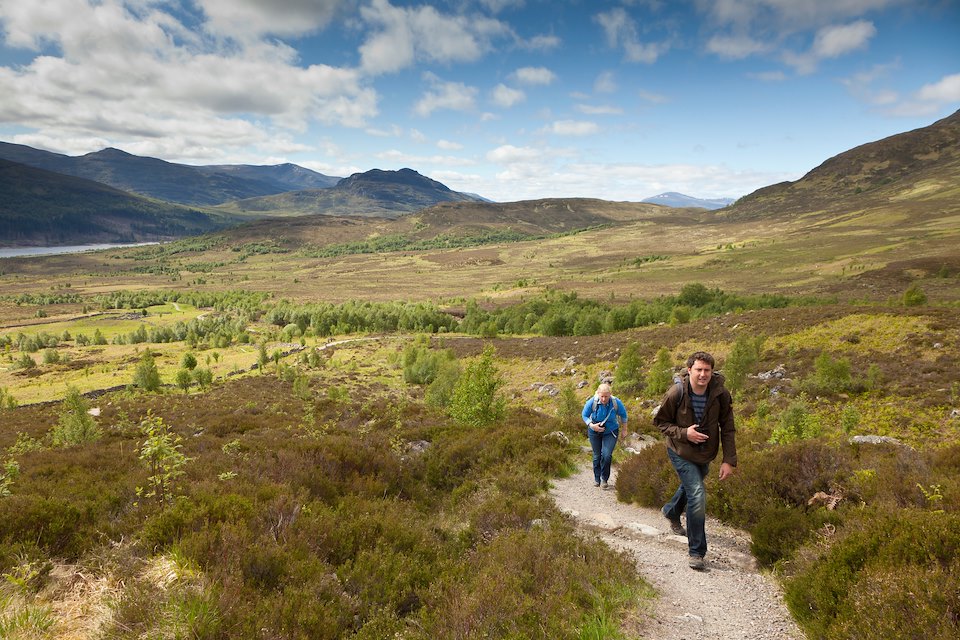
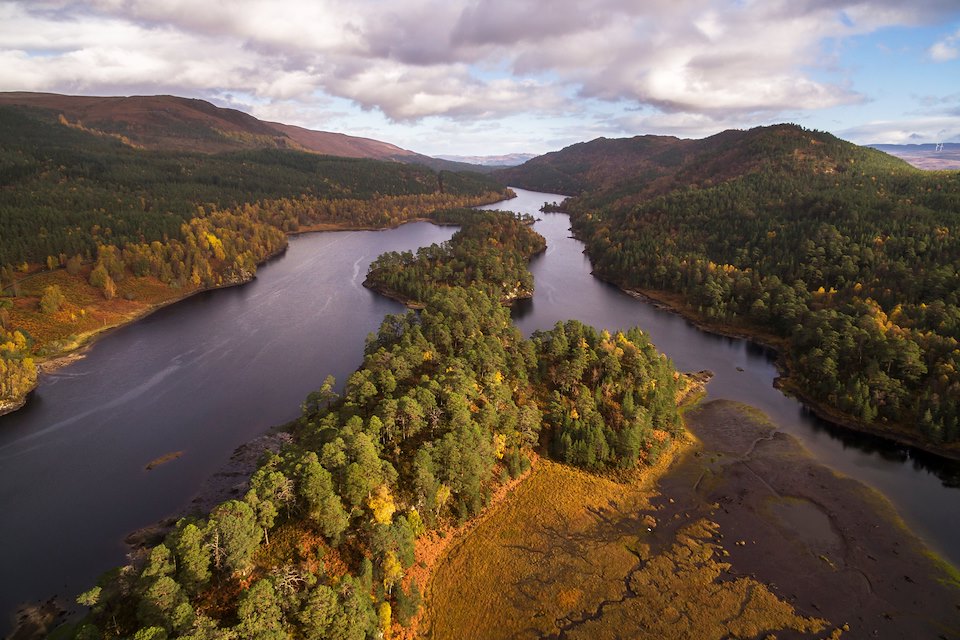
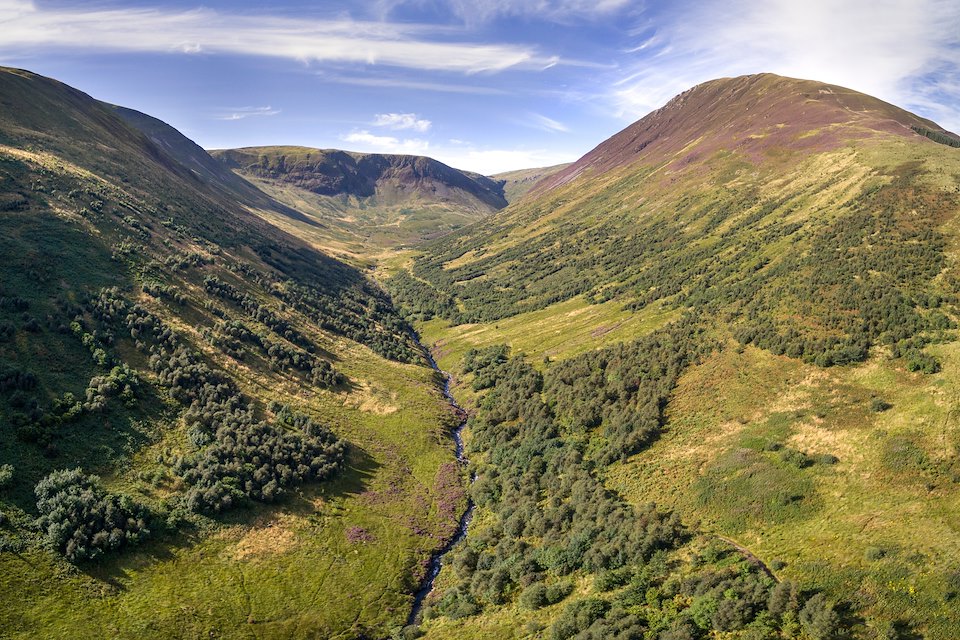
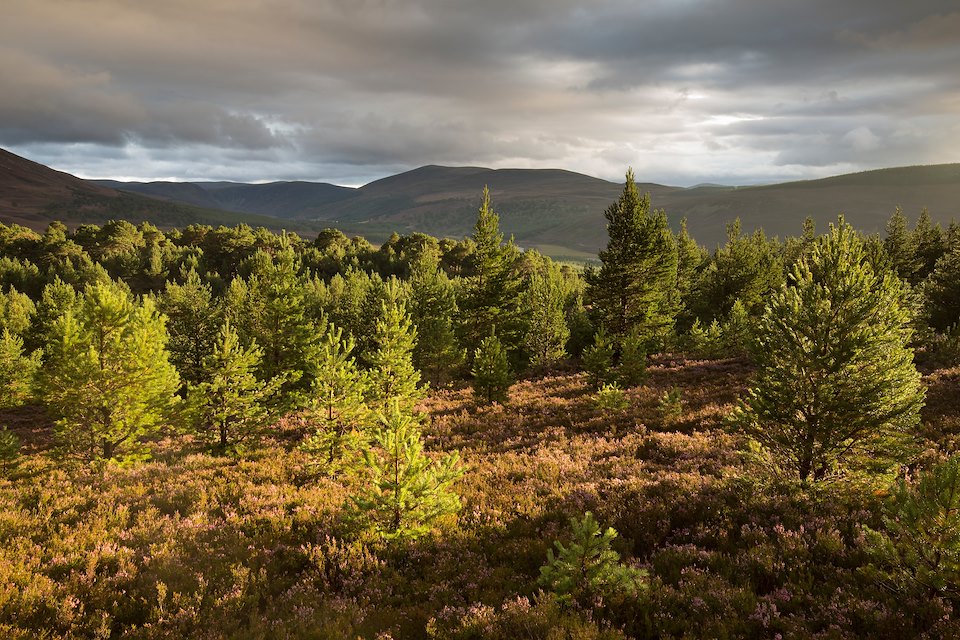
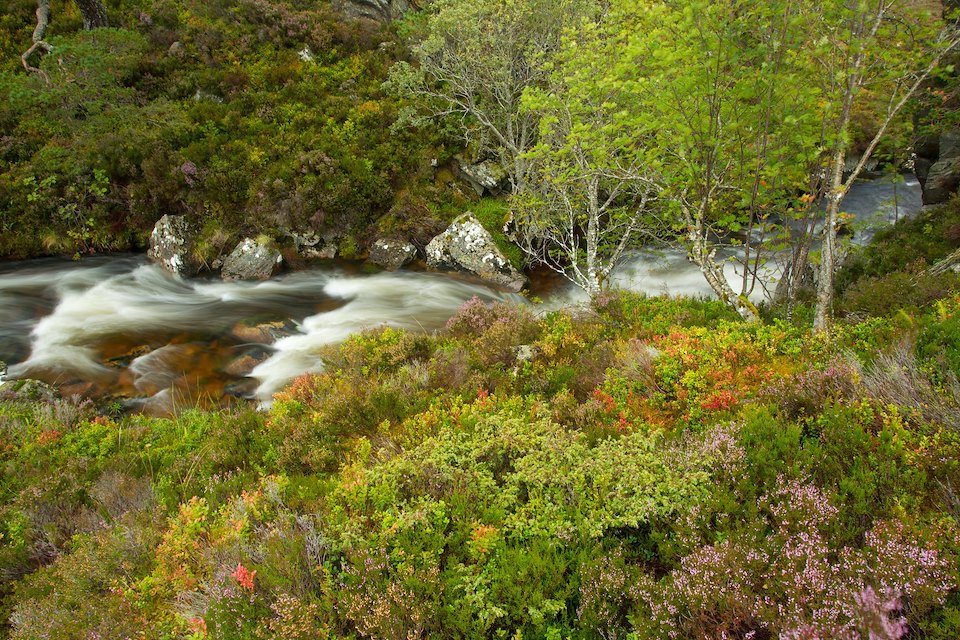
Landscapes in transition. From Lochaber to Lochinver; from Carrifran to the Cairngorms. Across Scotland, the restoration and reconnection of vibrant, dynamic habitats is gathering momentum, creating a more diverse and resilient landscape for people.
And what about people and their place in the landscape? Of course, the rewilding movement isn’t just about our remote hills and coastlines – we can practice rewilding in our gardens, on our roadside verges, in our farming practices and our forestry. But I’m writing here primarily about our rugged and wild landscapes, away from our tamed, urban centres - places that thousands of us turn to for our recreation. Walking in the wild is a wonderful way to ‘rewild’ ourselves, both mentally and physically. Of course, wildness is relative. Both our past and present activity has shaped many of these places and will do so into the future. But it seems clear to me that many people who venture into Scotland’s wild places are motivated by a need to ‘get away’; a feeling that instinctively recognises the recuperative powers of time spent in ‘otherness’, even for a short period.
In the Highlands where I live, this almost visceral need for ‘nature’, brings the many visitors that help keep the local economy viable. Accommodation, eating places, shops, fuel stations, guides, artists, crafts and tradespeople, local food producers and even a construction workforce, are all supported directly or indirectly by the wild nature that people come to enjoy.
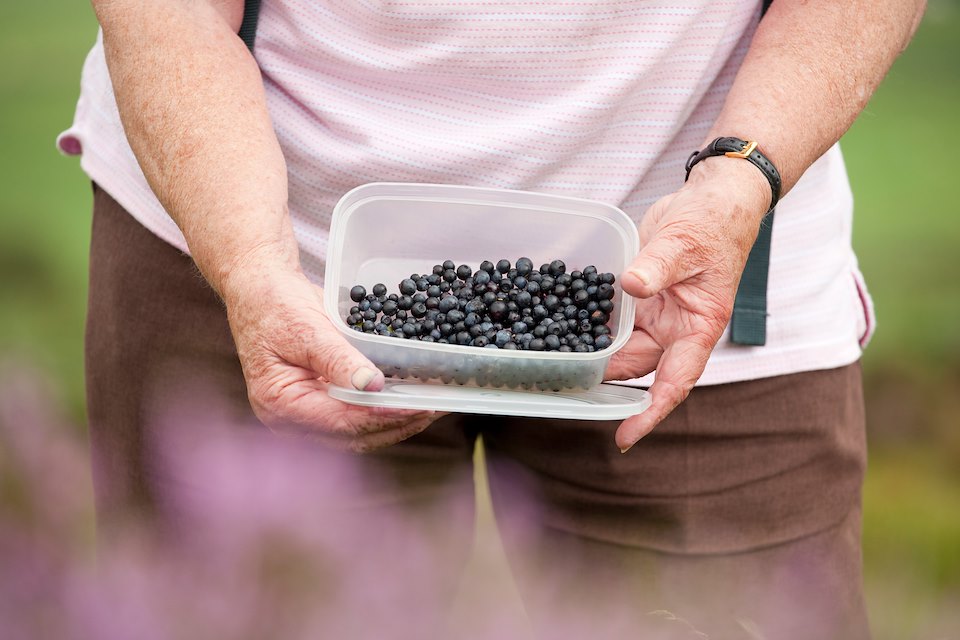
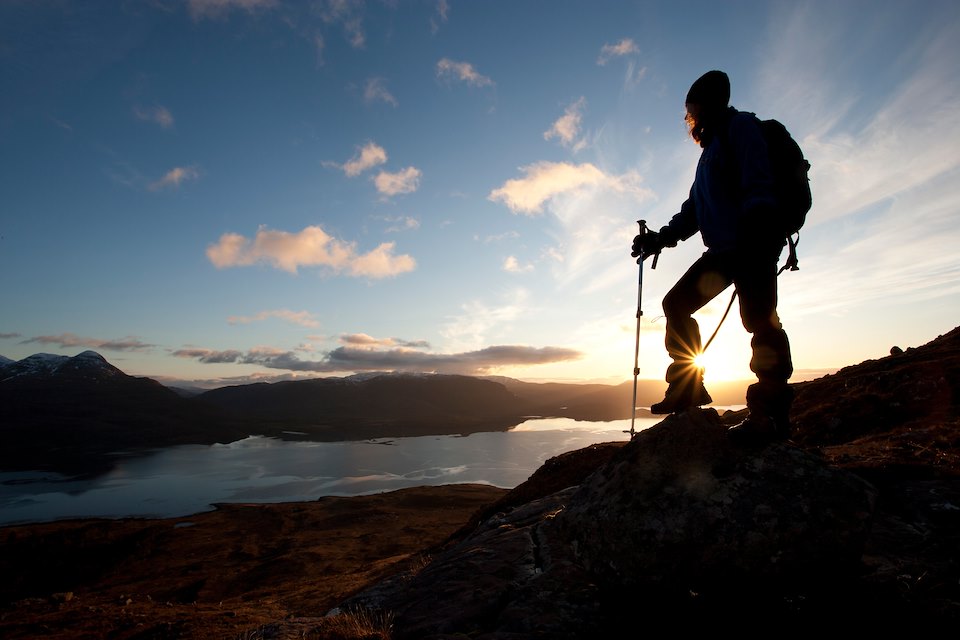
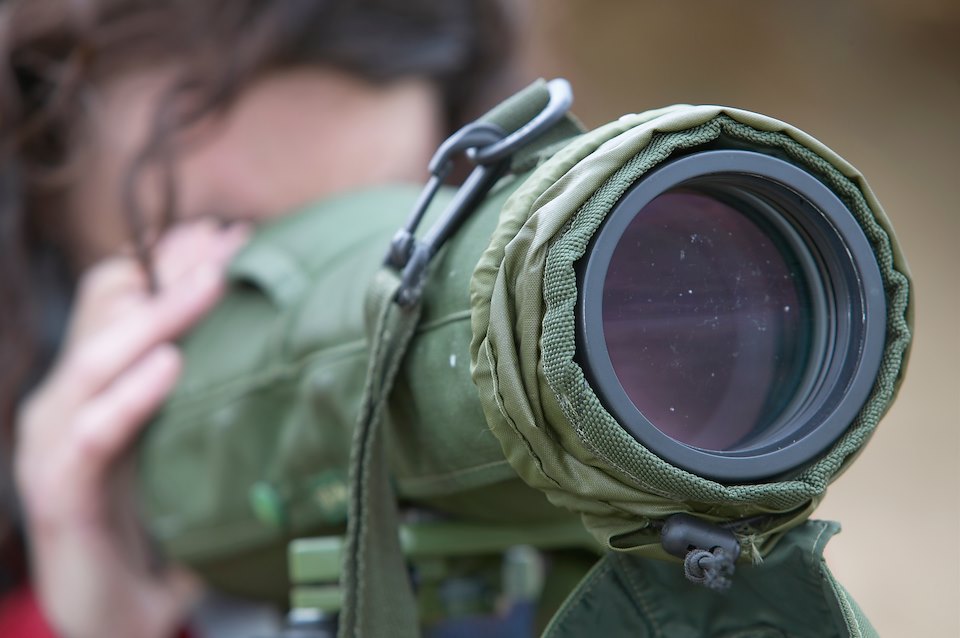
High numbers of visitors can create challenges for rural communities, but ‘immersive’ nature-based tourism provides significant economic, social and public health benefits.
Truly "rewilding" some of our beloved wild places would mean something quite different.
But what does rewilding mean for hillwalking itself? How will it change our experience in the mountains? If it really takes off, will the hills just be covered in dense forests, and those views we cherish will be lost to the trees? When we talk about expanding our woodlands, I think some people conjure up images of those silent, regimented conifer plantations reaching out across the summits; their imaginations still confined by the baseline of their own experiences.
Truly ‘rewilding’ some of our beloved wild places would mean something quite different. The most remote glens would be so much richer and more beautiful clothed with Scots pines, birches, rowans, and in the west, oaks. The highest ground would not support trees as we know them, but a complex mix of montane scrub – dwarf birches, willows and other lower growing species. It’s a high-altitude world that we’ve almost entirely lost in Scotland, so it’s not surprising that many find it hard to even imagine. Our wild places would become much richer in insects and bird life; more interesting. Red deer and grouse would still be very much part of the landscape – vital components in the ecological engine - but would no longer define it. Beavers and white-tailed eagles have been returned already; pine martens and ospreys have bounced back of their own accord, but might the forests of the future provide a home for lynx and even wolves?
I think back to what originally drew me to the hills: striving for a fuller understanding of the land and how things are connected; and finding solace and release in the experience of a natural world that exists in contrast to human society. It’s clear that rewilding our hills and mountains is only going to strengthen their lifelong hold over me.
Paul Webster is the editor of walkhighlands, Scotland's leading website for walkers, with free detailed guides and mapping to more than 2,100 routes in all parts of the country, from ascents of every Munro and Corbett to short woodland, coastal and even urban walks.

